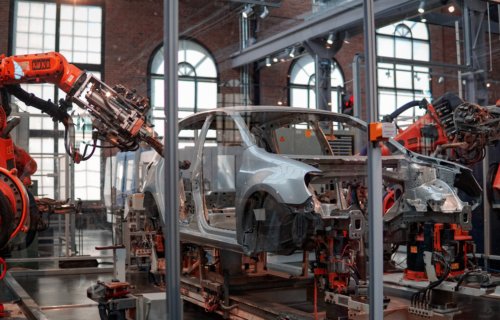
NEW HAVEN, Conn. — Death by robots might seem like an unusual cause of death, but as robots replace people on factory floors, there has been a rise of suicides and drug overdoses — especially in people between 45 to 54. A new study found a link between automation of U.S. manufacturing and an increased mortality rate among working-class adults.
Automation is partially responsible for a decline in U.S. manufacturing jobs. Prior research has estimated a loss of 420,000 to 750,000 jobs during the 1990s and 2000s, most of which were manufacturing jobs.
“For decades, manufacturers in the United States have turned to automation to remain competitive in a global marketplace, but this technological innovation has reduced the number of quality jobs available to adults without a college degree — a group that has faced increased mortality in recent years,” says lead author Rourke O’Brien, assistant professor of sociology in Yale’s Faculty of Arts and Sciences in a media release. “Our analysis shows that automation exacts a toll on the health of individuals both directly — by reducing employment, wages, and access to healthcare — as well as indirectly, by reducing the economic vitality of the broader community.”
Job loss and low wages led to a rise in suicide and opioid drug use
The team tracked U.S. industries transitioning to automation between 1993 and 2007. Then, they overlapped these trends with U.S. death-certificate data over the same time period to estimate the mortality rate of working-age adults in those counties and how they died.
For every industrial robot per 1,000 workers, there were about 8 more deaths per every 100,000 males between 45 to 54. There were also 4 additional deaths per 100,000 females in the same age group.
One association found in the study included an elevated increase in suicides among middle-aged men. They also associated the rise in automation with drug overdose deaths among men and women between 20 and 29. Specifically, automation appeared to have contributed to a 12% increase in drug overdose mortality among working-age adults. There was also evidence of lost jobs and lower wages caused by automation linking to an increase in murder, cancer, and heart disease.
Labor marketing policies could reduce death and despair from job loss
One reason behind the uptick in deaths is the inability to have an affordable income. The study authors say governments with resources such as social safety net programs, higher minimum wages, and limited access to prescription opioid programs can weaken the effects of automation on people’s health.
“Our findings underscore the importance of public policy in supporting the individuals and communities who have lost their jobs or seen their wages cut due to automation,” said Atheendar S. Venkatarmani, senior author of the study. “A strong social safety net and labor market policies that improve the quality of jobs available to workers without a college degree may help reduce deaths of despair and strengthen the general health of communities, particularly those in our nation’s industrial heartland.”
The study is available to read in the journal Demography.
